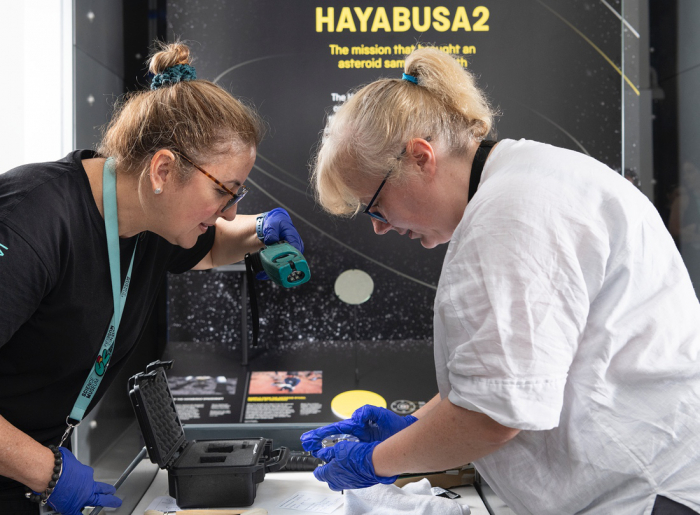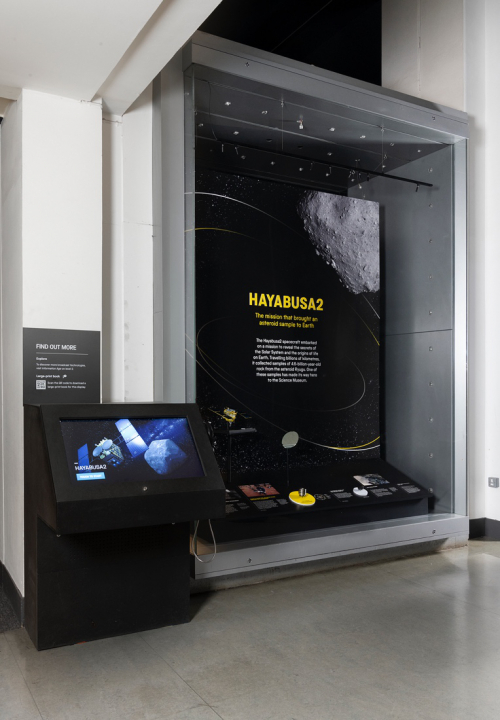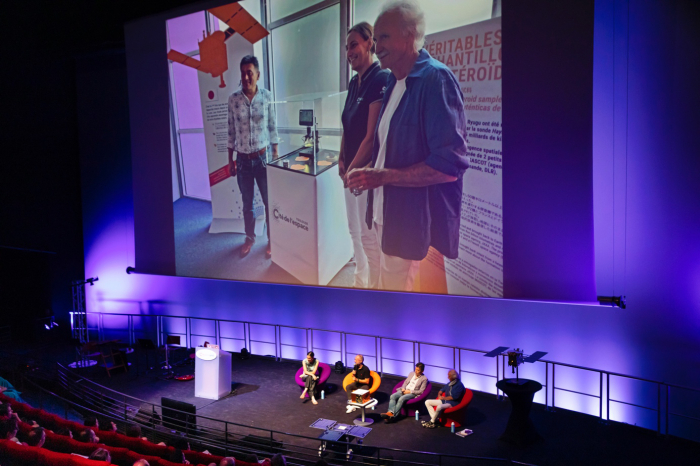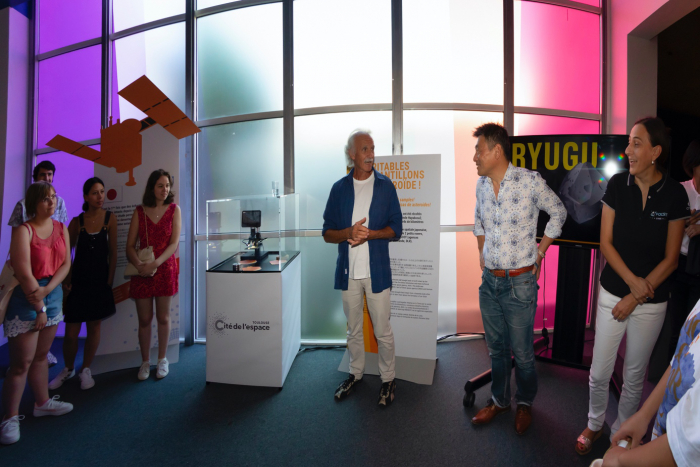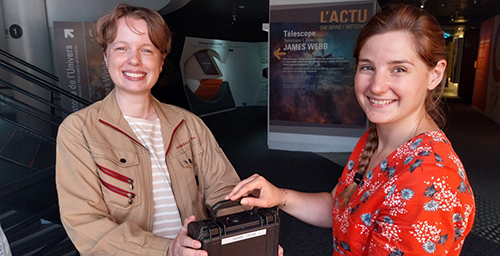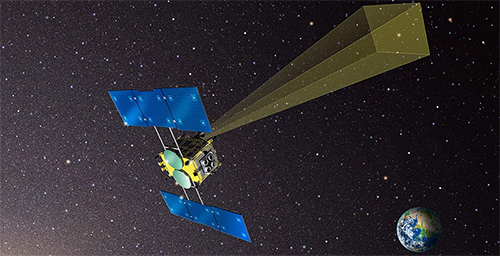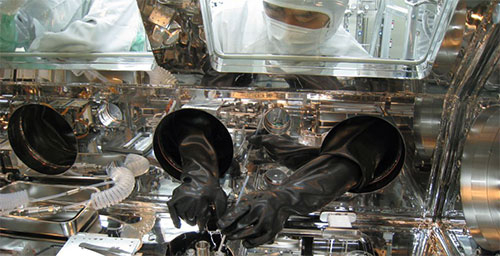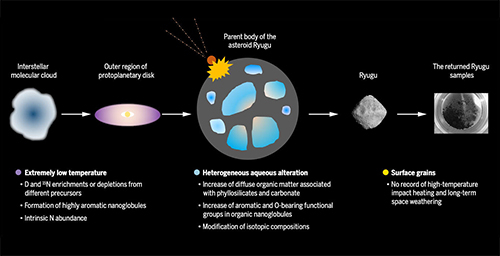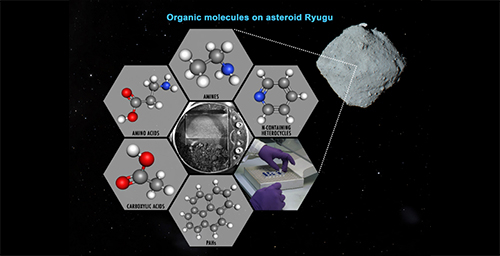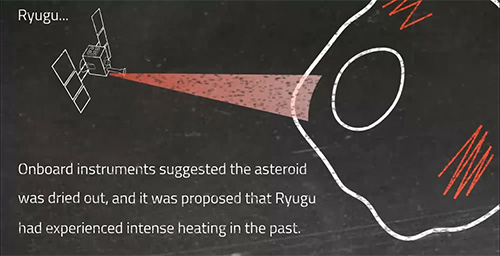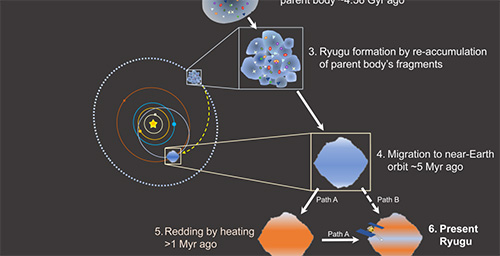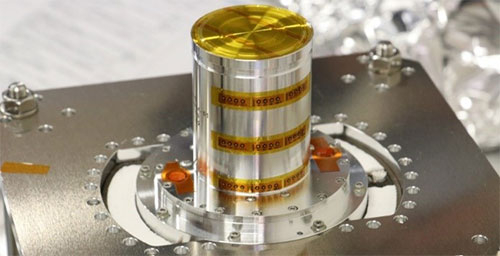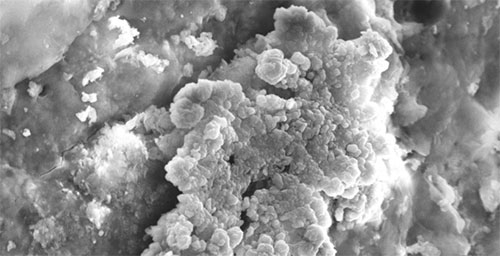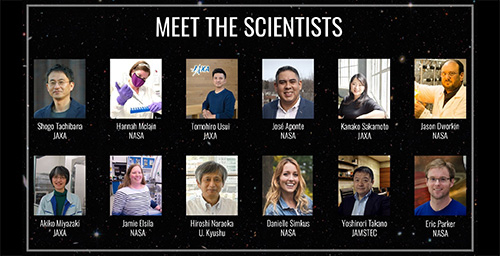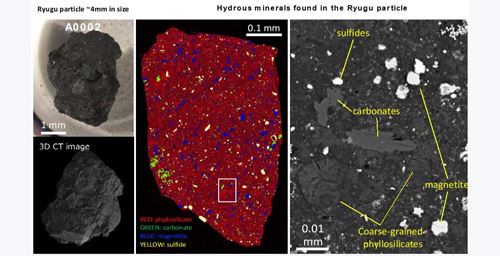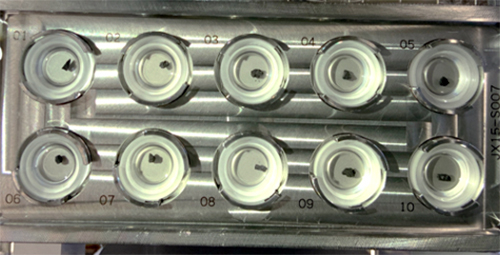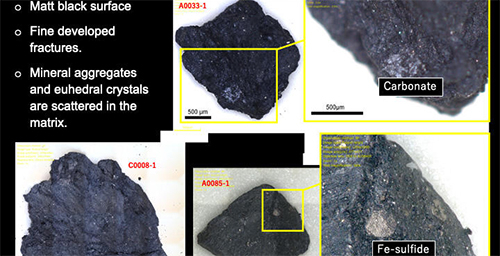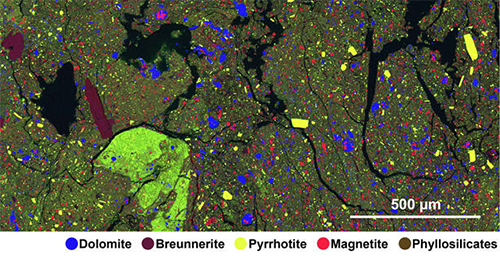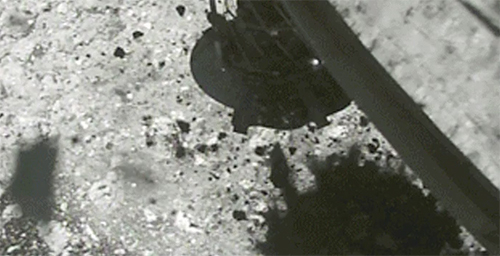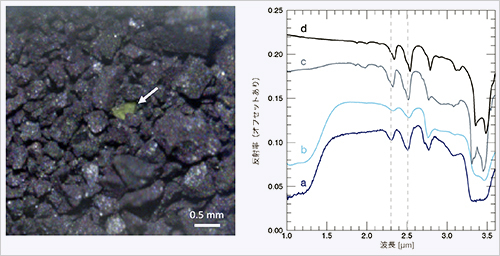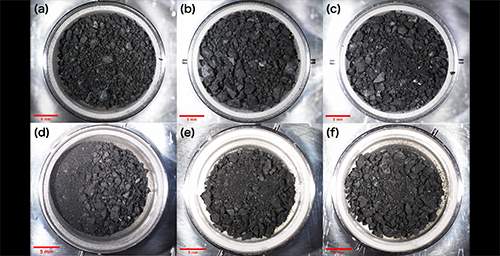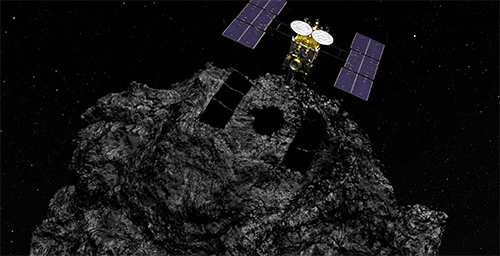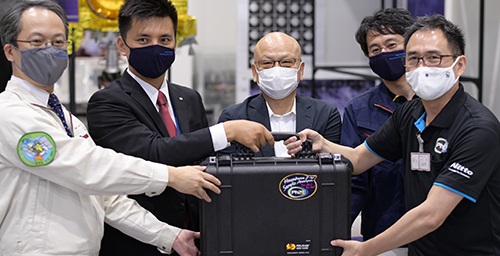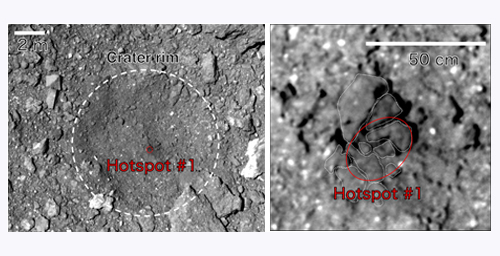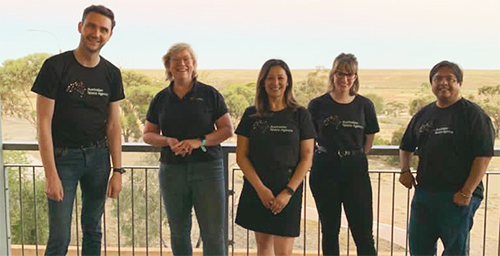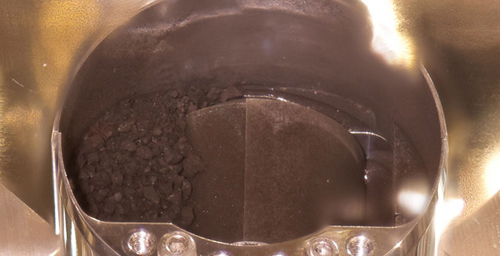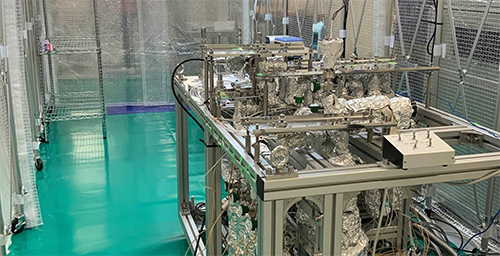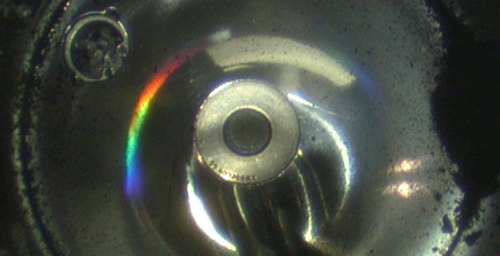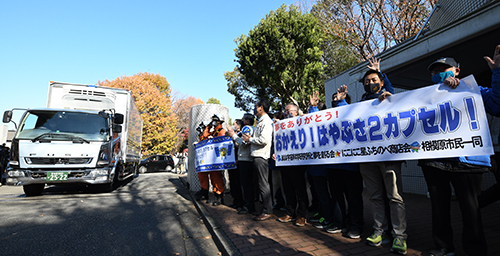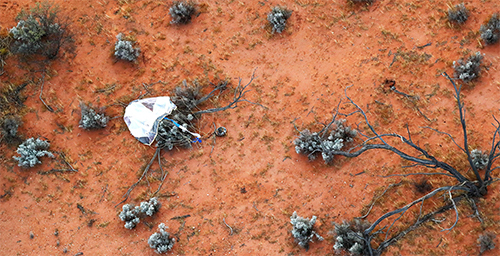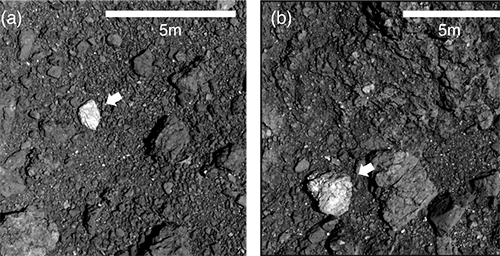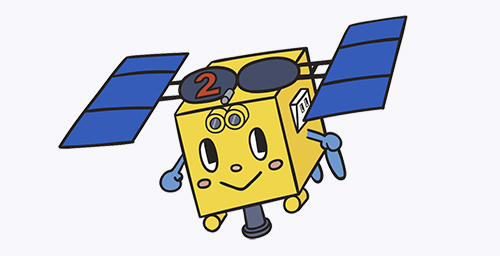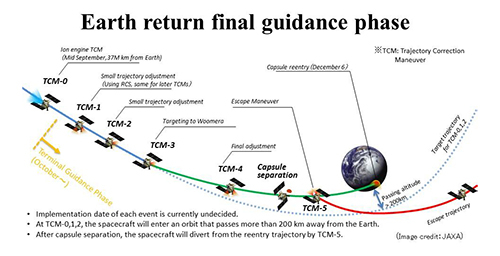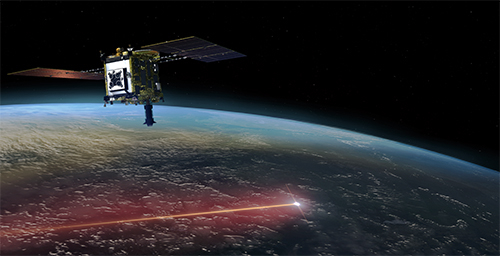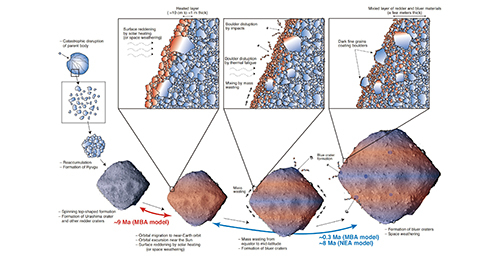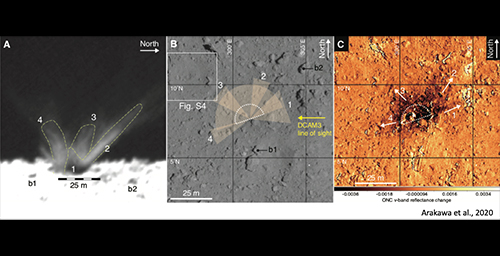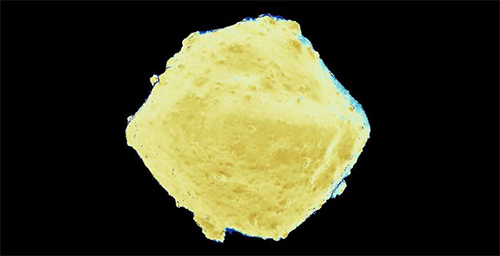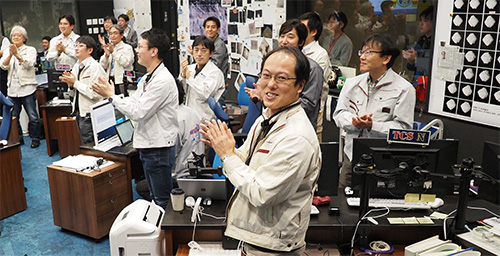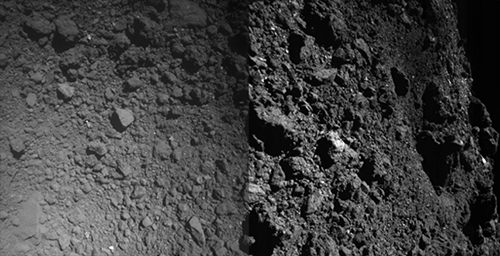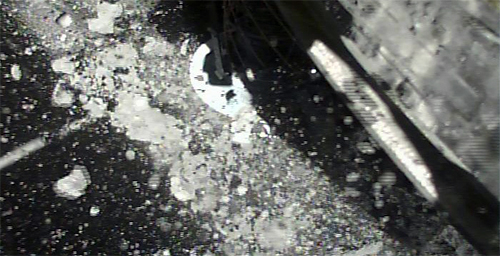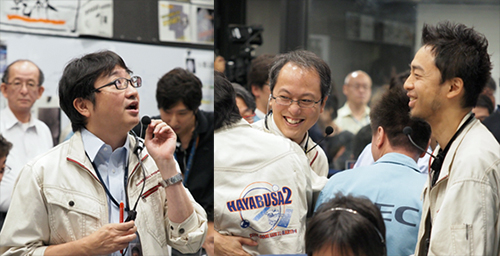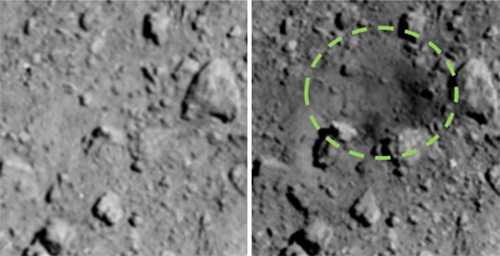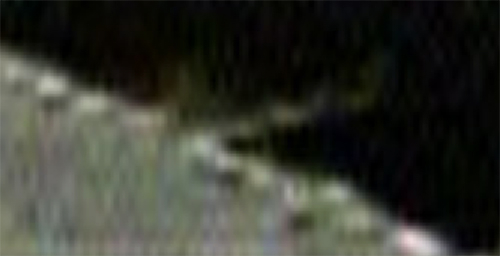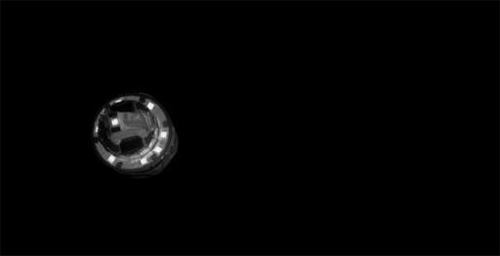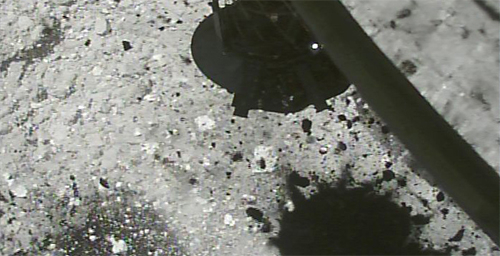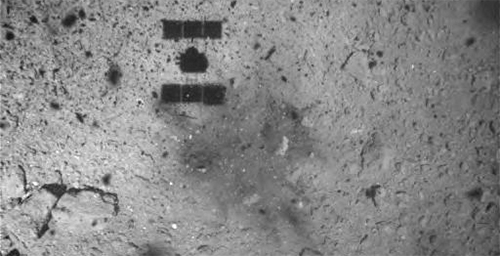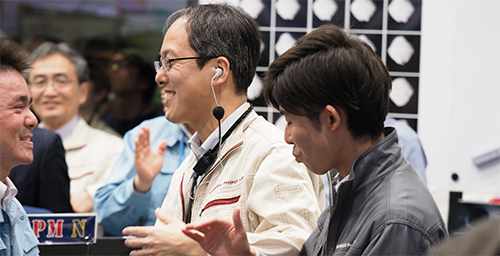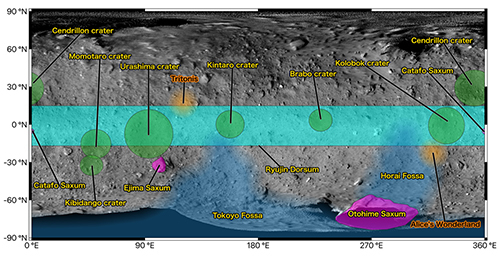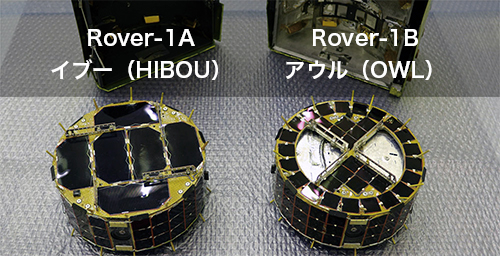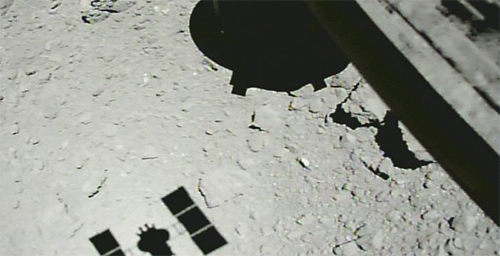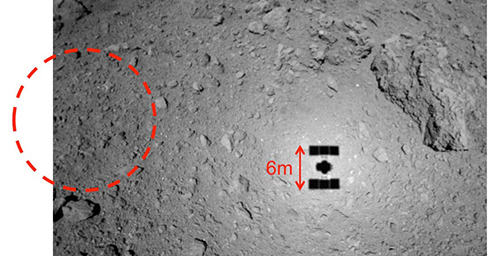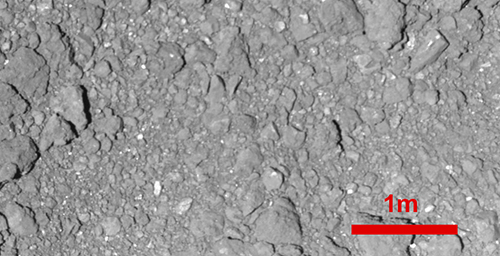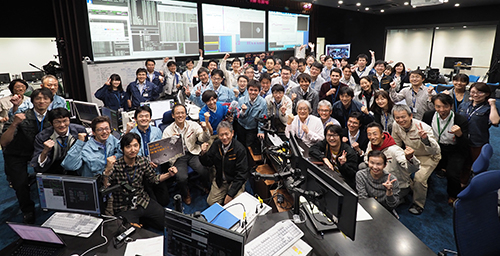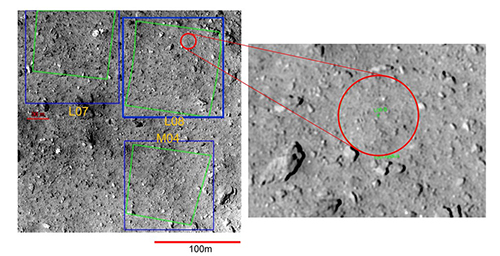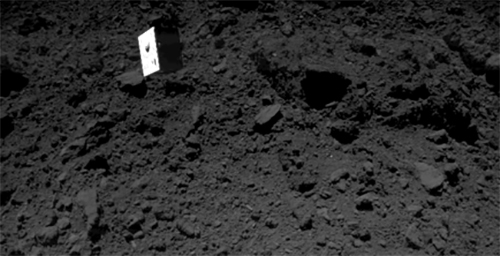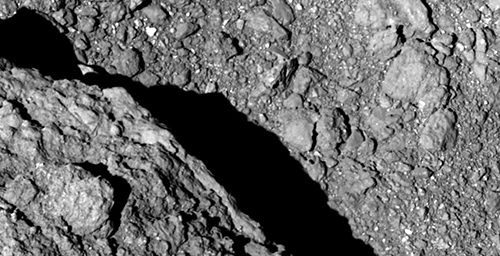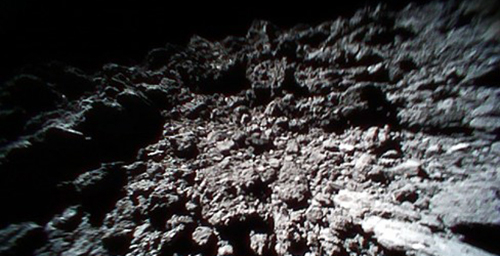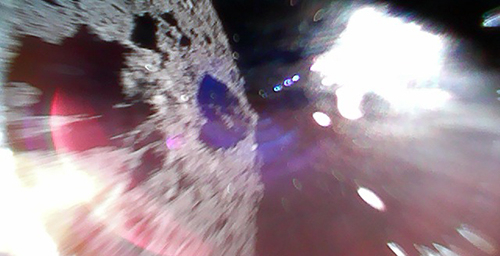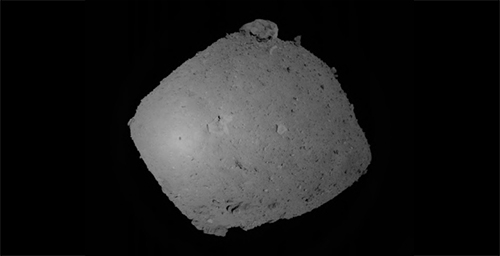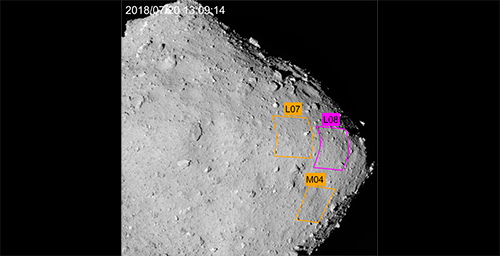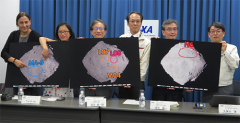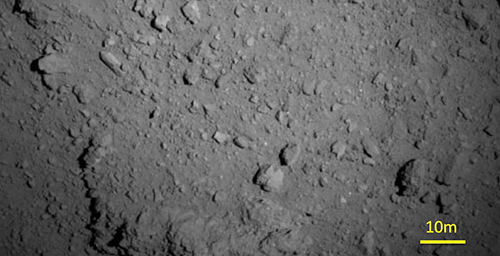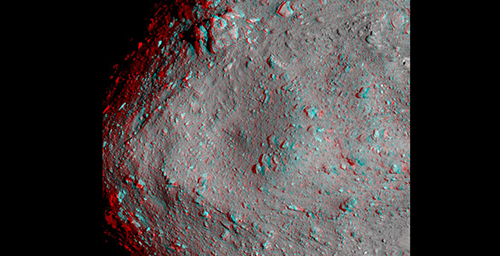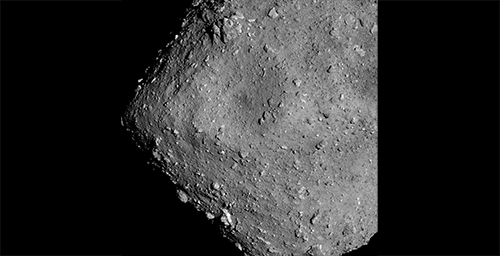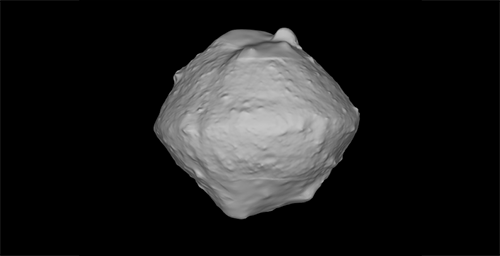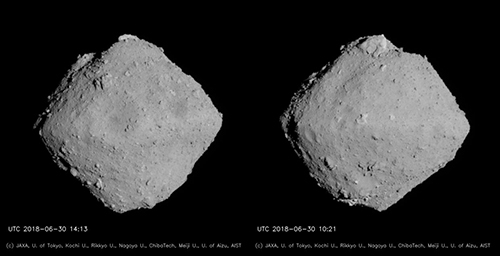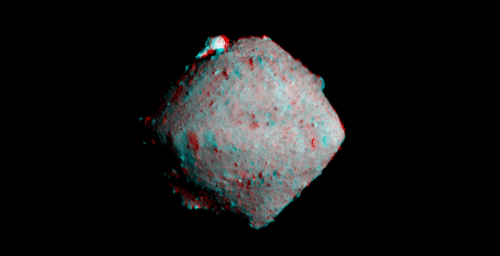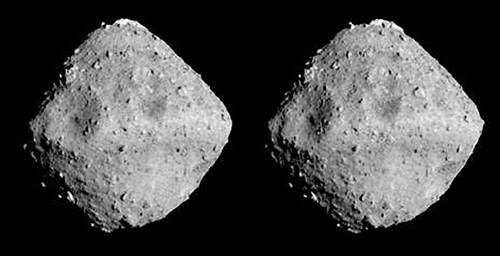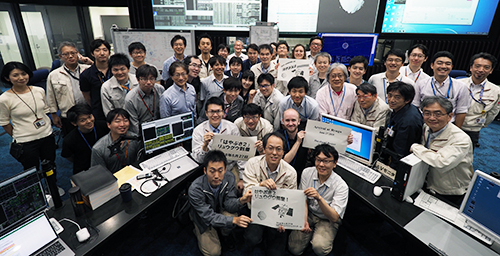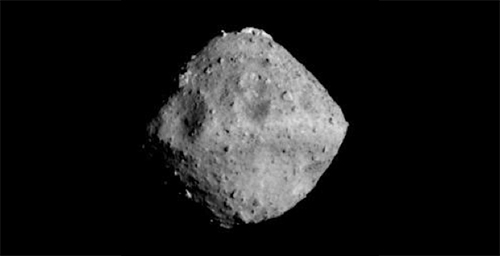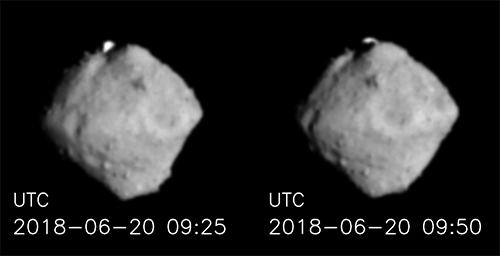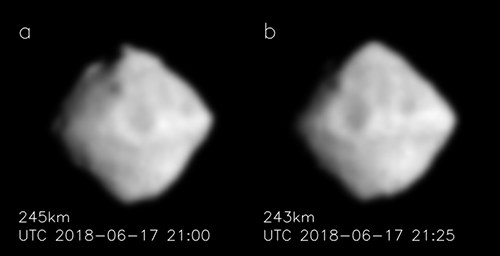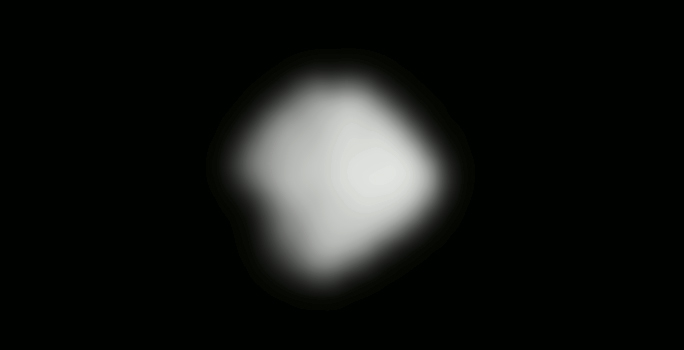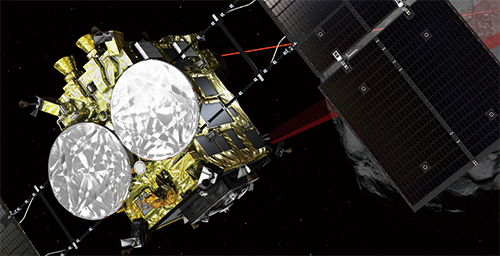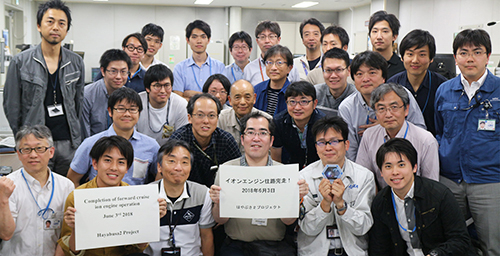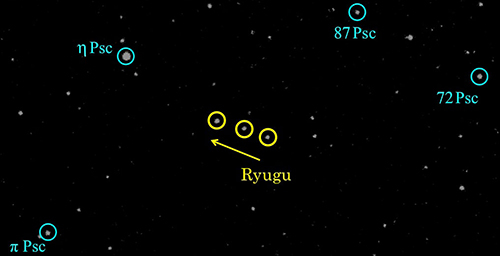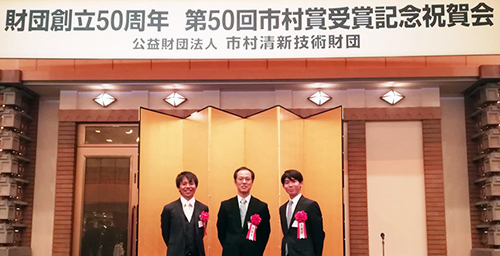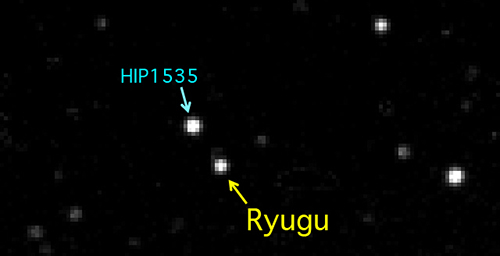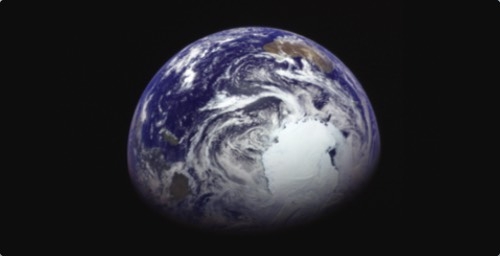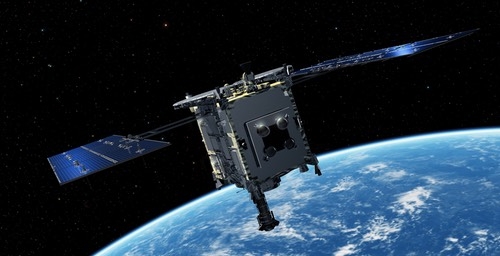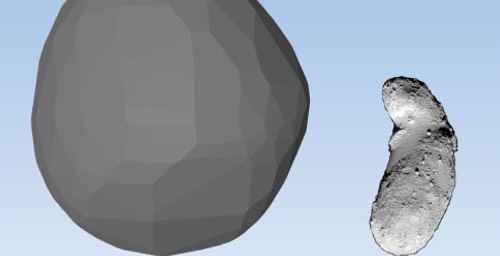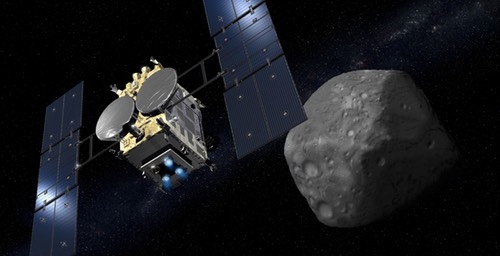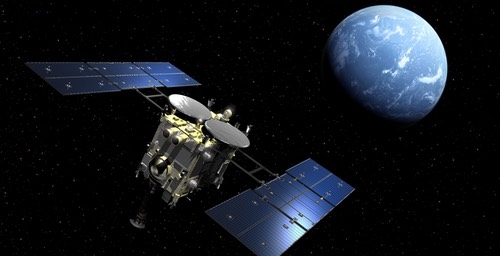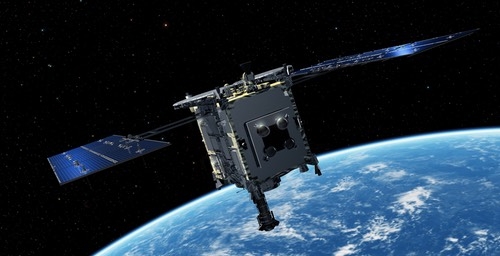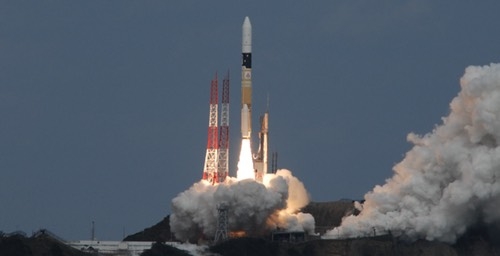We are delighted to announce that the first international public exhibits of grains from asteroid Ryugu have opened at the Science Museum in London, UK and at Cité de l'espace in Toulouse, France.
In December 2020, the Hayabusa2 spacecraft returned to Earth carrying samples collected from asteroid Ryugu. Later studies of the asteroid grains would reveal that Ryugu formed in the very early days of the Solar System, and that the sample is a time capsule for the material that formed the planets that could hold clues as to how the Earth became a habitable world.
The sample capsule landed in the Woomera desert in Australia, in a sealed container that prevented contamination from the Earth's environment. Grains from that sample are now being studied at research facilities around the world.
This September, two exhibitions displaying grains from the asteroid Ryugu sample opened to the public at the Science Museum in London, and at Cité de l'espace in Toulouse.
Speaking about the two exhibits, ISAS Deputy Director General Fujimoto Masaki expresses his enthusiasm that the asteroid grains will now be able to be seen by many more people,
"International collaboration has been indispensable for the big success of Hayabusa2 which returned very precious samples from Ryugu that are truly eloquent about the formation of our mother planet Earth. We wanted to share this excitement with people all over the world and I am so happy that all the discussion in the past one and a half year is now crystallised as the exhibits at Cité de l'espace in Toulouse and at the London Science Museum. Visiting the exhibits will trigger you to think not only about the team effort it took to bring these samples back, but also that the shape of our planet is not something that can be taken for granted."
The Science Museum prepare the exhibition. The black box was used to transport the sample from Japan to the UK, and the metal cylinder being held on the right is the "facility-to-facility transfer container" than contains the Ryugu grain. (Credit: Science Museum Group)
The Science Museum exhibit opened on September 7, 2023 and displays a grain from asteroid Ryugu alongside a model of the Hayabusa2 spacecraft. The exhibit is free to visit and is part of the Science Museum's "Exploring Space" gallery.
Heather Bennet, Curator of Space Technology at the Science Museum notes that the timing of the opening of the exhibit is right before the NASA OSIRIS-REx spacecraft is due to return to Earth with grains from a second asteroid Bennu.
"We are thrilled to show this incredible asteroid sample for the first time in the UK. Our new free display at the Science Museum gives visitors the rare opportunity to look at an incredibly ancient object that was collected millions of kilometres from our planet. The display celebrates cutting-edge technology developed to collect this tiny, but important piece of asteroid and offers a wider view of space exploration today through the success of JAXA's Hayabusa2 mission.
The Hayabusa2 display explores the technological advances which allow scientists to study asteroids and reveal more about the Solar System and origins of life. The display features a 1:20 scale model of the Hayabusa2 spacecraft, as well as an enlarged replica of the asteroid sample. The display opens just in time to welcome back to Earth the first NASA asteroid sample return mission, with OSIRIS-REx due to return from asteroid Bennu on 24 September 2023."
The Hayabusa2 and OSIRIS-REx teams have been working closely together during the two missions, and will exchange samples to enable the first comparative studies of two asteroids.
The completed exhibit at the Science Museum (credit: Science Museum Group)
The Science Museum also held a panel discussion on September 13 to discuss both the prospect of asteroids helping seed life on Earth, and the possibility that an asteroid impact might also end it. Fujimoto participated on this panel, along with three scientists from the UK.
The exhibit at the scientific discovery centre, Cité de l'espace, opened on September 9, coinciding with the Japan versus Chile match in the Rugby World Cup held in Toulouse that same weekend. The opening day was marked with a roundtable discussion with Fujimoto, Aurélie Moussi from the French Space Agency, CNES and Jean-Pierre Bibring from l'Institut d'Astrophysiques Spatiales.
The exhibit includes two grains from asteroid Ryugu, and a model of the Hayabusa2 spacecraft loaned by CNES.
The round table discussion at Cité de l'espace to mark the opening of the Ryugu sample exhibit (shown in the top slide). In the top slide, standing beside the exhibit is (left to right) Fujimoto Masak (JAXA)i, Jean-Pierre Bibring (l'Institut d'Astrophysiques Spatiales) and Aurélie Moussi (CNES). Seated on stage for the discussion from left to right are Aurélie Moussi, Christophe Chaffardon (Cité de l'espace), Fujimoto Masaki and Jean-Pierre Bibring. In front of the four panellists is a model of the MMX rover, developed by the French and German space agencies, that will be part of the JAXA-led Martian Moons eXploration (MMX) mission to Phobos. (Credit: M. Huynh)
Visitors on the opening day of the exhibit at Cité de l'espace had the chance to hear Bibring, Fujimoto and Moussi discuss the mission and the science. (Credit: M. Huynh)
The two exhibits will be open throughout the next year. Please see their websites for details.

